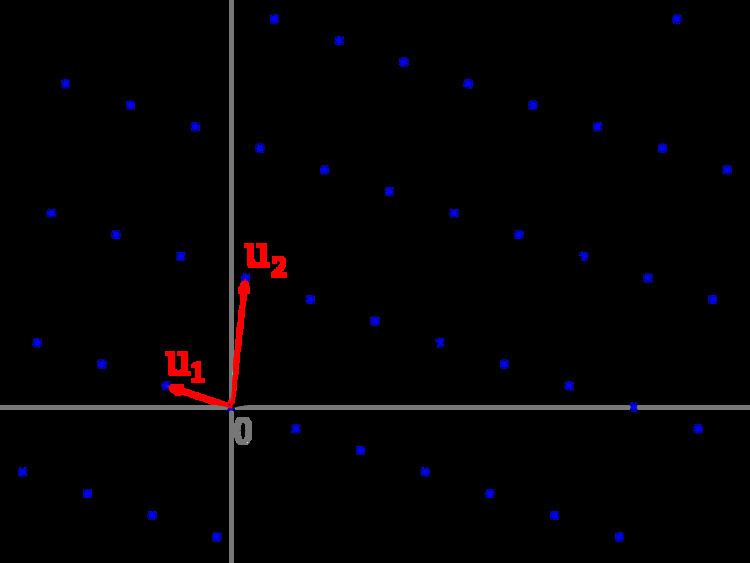 | ||
In mathematics, the goal of lattice basis reduction is given an integer lattice basis as input, to find a basis with short, nearly orthogonal vectors. This is realized using different algorithms, whose running time is usually at least exponential in the dimension of the lattice.
Contents
Nearly Orthogonal
One measure of nearly orthogonal is the orthogonality defect. This compares the product of the lengths of the basis vectors with the volume of the parallelepiped they define. For perfectly orthogonal basis vectors, these quantities would be the same.
Any particular basis of
The orthogonality defect is the product of the basis vector lengths divided by the parallelepiped volume;
From the geometric definition it may be appreciated that
If the lattice reduction problem is defined as finding the basis with the smallest possible defect, then the problem is NP complete. However, there exist polynomial time algorithms to find a basis with defect
In two dimensions
For a basis consisting of just two vectors, there is a simple and efficient method of reduction closely analogous to the Euclidean algorithm for the greatest common divisor of two integers. As with the Euclidean algorithm, the method is iterative; at each step the larger of the two vectors is reduced by adding or subtracting an integer multiple of the smaller vector.
Applications
Lattice reduction algorithms are used in a number of modern number theoretical applications, including in the discovery of a spigot algorithm for
When used to find integer relations, a typical input to the algorithm consists of an augmented
The LLL algorithm for computing a nearly-orthogonal basis was used to show that integer programming in any fixed dimension can be done in polynomial time.
Algorithms
The following algorithms reduce lattice bases. They can be compared in terms of runtime and approximation to an optimal solution, always relative to the dimension of the given lattice. If there are public implementations of these algorithms this should also be noted here.
